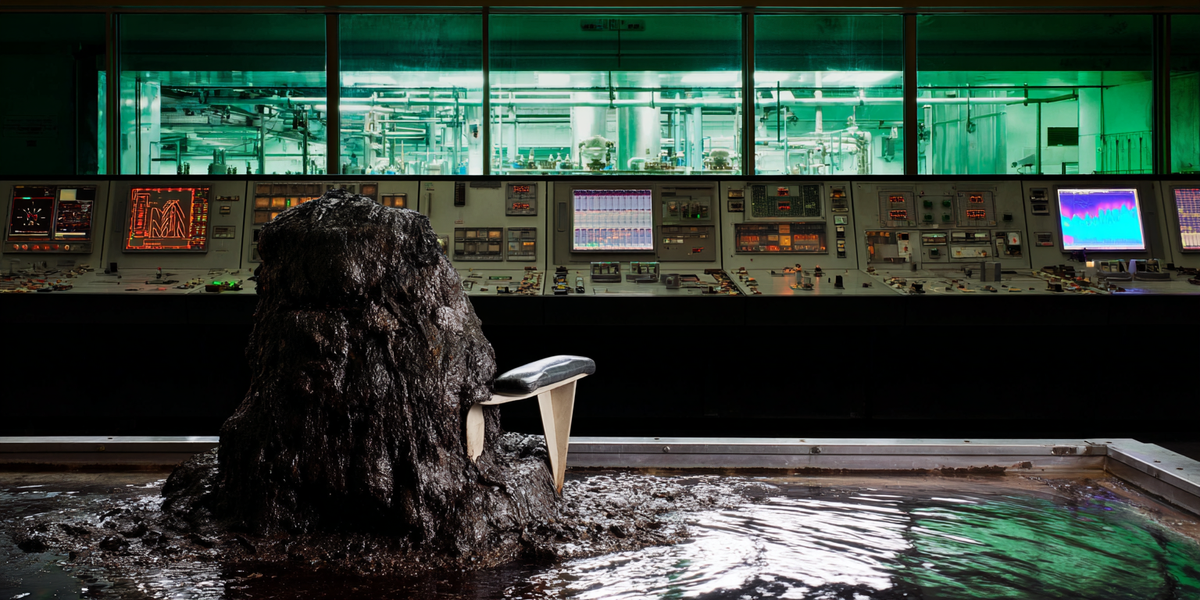"And what rough beast, its hour come round at last,
Slouches towards Bethlehem to be born?"
-- William Butler Yeats, from "The Second Coming" 1919
Machines Die First, Politely
The nicest thing about a nuclear meltdown — if you’re inclined toward optimism — is that it doesn’t blow the furniture around. You don’t walk into a blast zone and find chairs embedded in walls like some cosmic bar fight. Everything is exactly where you left it: the servers hum (or they would, if they still had a hum to hum), the keyboards sit neat as dominoes, and the hard drives — oh, those neat little bricks of digital memory — look ready as ever to rat you out to your boss for watching the game instead of the reactor meters...
But these things are not what they appear.
The moment the core went from “stable” to “unspeakable,” invisible waves of gamma radiation poured out and started doing what they do best: vandalizing the universe at the atomic level. Gamma rays are nature’s delete key. They slam into semiconductors with all the subtlety of your drunk uncle at Thanksgiving dinner, flipping bits, punching holes in silicon lattices, and permanently shorting transistor gates the way your toddler fixes Dad's Amiga wristwatch by hammering it with a rock...
Your average hard drive’s controller chip — that tiny, smug square of silicon — dies in under a second. There’s not even smoke. No flash, no bang, just a microscopic sigh and then… nothing.
The platters themselves cling to dignity a little longer. Made of aluminum or glass, coated in a whisper-thin ferromagnetic layer, they sit there like stoic monks, refusing to panic. For hours, possibly, they may hold a ghost of their files: badly corrupted reactor calibration logs, radiation safety reports, and that one spreadsheet proving everyone ignored the maintenance schedule.. But neutron strikes don’t care about nostalgia. Each impact jostles magnetic domains, subtly turning ones into zeros, zeros into “maybe’s,” until the drive becomes a zen riddle: data both there and not there, Schrödinger’s backup.
If you were to salvage one later, you might hold it up and say, ‘Look, it’s fine.’
And it will look fine — as it quietly bakes your hands and microwaves your eyeballs from the inside out... Behold, the world’s smallest, deadliest kitchen appliance disguised as a dead hard drive. As dead as Norman Bates's mother...
The Humans
The machines may be afforded a modicum of dignity in demise. Humans? Not so much.
Radiation doesn’t “burn” in the way fire burns — that would almost be merciful. It dismantles you. It begins with the smallest things: DNA strands snap like cheap zipper teeth. Chromosomes look like shredded spaghetti. Every cell in your body suddenly realizes it’s terminal, and reacts with all the dignity and composure of a crowd at a mass shooting.
Gamma rays keep hammering, but they bring friends: neutrons. Neutrons don’t just ionize you — they physically shove atoms out of the way. The carbon in your collagen? Rearranged. The hydrogen in your water molecules? Torn apart into a blizzard of hydroxyl radicals that immediately start cutting apart whatever’s left of you like Leatherface with a chainsaw.
From here, things speed up. Skin blackens and blisters. Blood vessels rupture like cheap plumbing. Muscles soften, then surrender. Organs slump. The spinal cord, that proud central cable, simply unplugs.
And at last, you become little more than charred, gelatinous sludge.
This isn’t some poetic flourish — it’s molecular reality. Proteins denature (egg-in-pan style), fats melt (butter-in-microwave style), and connective tissue basically says, “I didn’t sign up for this,” and turns into a kind of glutinous soup.
What’s left isn’t really a body — it’s more like Jeffrey Dahmer's refrigerator after a long power outage: swollen, darkened, and slumping into itself, a heap of shapes that grotesquely parody your devastated humanity.
om tat sat


Member discussion: